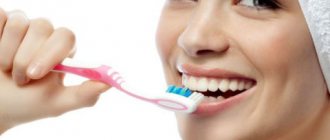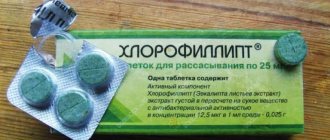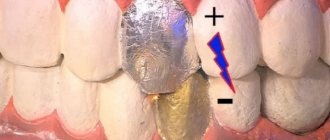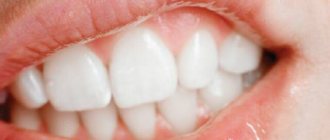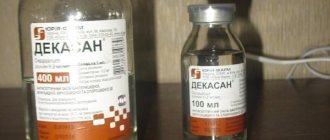A few words about marigolds
Calendula officinalis (marigold) is an annual herb that can easily reproduce by self-sowing.
Belongs to the aster family. The height of the bushes can reach up to half a meter. It has a unique specific aroma. The stem has a tendency to branch, which is why marigolds are called bushes. From one unit, more than a dozen medicinal flowers are obtained, which are the most valuable. This herb was named so for a reason. Even in ancient times, they noticed how marigolds follow the sun, turning towards it. This is where the kalend comes from, which in Latin means “the first day of the month.”
It was there that the healing capabilities of this flower were recognized. In addition, it is treated as a symbol of love and constancy of relationships; bouquets with calendula were presented to their ladies, they were present at weddings, they dressed up in them.
Marigolds were often used in fortune telling. On its basis they made love spells, fought witchcraft with the help of calendula, and could heal the sick.
Our ancestors also believed that marigolds calm the heart and protect against infection.
Algorithm of actions for making tincture
Despite the fact that calendula infusion is sold in any pharmacies, it would be ideal to make it yourself. Homemade calendula tincture eliminates the risk of encountering the problem of low-quality goods or the addition of unnatural substances. After cooking, it is best to store it in the refrigerator.
There are several ways to prepare the tincture:
- Fill a container with a volume of at least half a liter with calendula flowers and fill it to the top with water. To ensure that the liquid is well infused, the jar is hidden in a dark place and kept for 2 weeks. After this time, the tincture is filtered using gauze so that clear liquid remains. Only after this can it be used to rinse the mouth.
- Medicinal calendula flowers are crushed and 2 tablespoons are poured into a jar. Then add a quarter glass of vodka and cover tightly with a lid. You need to wait one week, then the tincture will be concentrated and will have the necessary medicinal properties.
The main thing is not to leave the container in a place illuminated by sunlight. Filtration of the tincture is an important and final step in preparing the tincture.
Rinse with soda for gum inflammation
Calendula tincture is sold in small opaque glass vials, since when exposed to direct sunlight, the drug loses some of its beneficial properties. The tincture itself is light yellow in color, while the shade of the medicine can vary to light orange. The tincture does not have a pronounced odor, so external use does not cause discomfort for the patient or surrounding people.
Calendula tincture is an alcoholic infusion of the inflorescences of a medicinal plant. In addition to the orange flowers themselves, which are also popularly called marigolds, different parts of the stem can be used to make an infusion. You can even prepare such an elixir yourself at home.
The spectrum of action of the drug is quite wide, since calendula has a diuretic, antiseptic and anti-inflammatory agent. Since the drug is made on the basis of natural ingredients, an overdose is practically impossible, since taking a larger amount of the drug inside does not cause poisoning or other side effects.
The causes of inflammatory processes in the gums can be very different. Their manifestations in the oral cavity can also be different. These may be ulcers on the cheeks, a red rash on the palate in adults, a taste of pus in the mouth, a bubble or blister on the gum, sores in the mouth, a sore tooth, a hole or a hard growth on the gum. Long-term inflammation of the mucous membranes can degenerate into an abscess on the gums. In this case, the wound in the mouth is most often painful and bleeds.
Any inflammatory process of the mucous membranes of the oral cavity is aggravated by the microflora of the oral cavity. Therefore, treatment of gums and strengthening of teeth is carried out using antiseptics and antibiotics.
SIGN UP FOR A FREE CONSULTATION
Baking soda is useful for treating gums at home. We will prepare a soda-based rinse solution. You will need 200 grams of water, a teaspoon of soda, a pinch of salt and a sage decoction (about 50 grams). Mix the ingredients. Rinse at least four times a day.
Aloe compress - wash the plant leaf, remove the thorns and cut lengthwise. Apply to gums for 15 minutes.
Self-treatment of gums at home - chamomile and calendula. These plants relieve inflammation well. To prepare the infusion, you will need a tablespoon of chamomile or calendula, pour boiling water over the herb (a glass will be enough). Let it brew. Strain. Alternate infusions.
Treatment of gums at home is also possible with an alcoholic infusion of propolis. Add 20 drops of tincture to a glass of warm water and you can begin the rinsing procedure.
Calendula consists of countless essential substances, thanks to which it has healing properties. The main one is calenden, there are also acids from the organic series (malic, salicylic), resins, carotene. There are essential oils that are responsible for the tart aroma. Almost all healing particles are found in flowers, namely carotenoids and flavonoids, which have significant pharmacological powers.
It is believed that they have the ability to fight inflammation and microbes, and suppress viruses. It also contains resins, glycosides, tannins, saponins, organic acids, vitamin C, potassium, calcium, magnesium, and trace elements. This explains the use of this herb in official and alternative medicine.
Substances that are obtained from flowers also have a general strengthening power, remove free radicals, make the walls of blood vessels strong, and promote the renewal of body cells. This plant has a bactericidal, wound-healing, anti-inflammatory effect. Calendula preparations fight high blood pressure, reduce heart rate, increase the force of heart contractions, and have a positive effect on nerves.
Calendula, in tandem with the same herbs and other medicinal substances, plays a big role in healing a significant number of ailments. In tandem with chamomile, marigolds increase the secretion of bile, and with sulfonamides and antibiotics they treat sore throats. Calendula helps with gastritis, gastric and duodenal ulcers, colitis, enterocolitis, liver and gallbladder diseases
From all of the above, you can understand that calendula is used in all areas of healing, including dentistry. It is used to treat thrush in children, gingivitis, pyorrhea, numerical forms of periodontitis, tooth pain. For this, they take decoctions, infusions, lotions from calendula flowers. Most often, in dentistry, it is calendula tincture that is used. What is a tincture?
Calendula tincture is a liquid form of medicine, which is prepared from 70% alcohol and plant materials obtained without heating, but by aging. You can buy it at any pharmacy, and it costs a penny. But the best thing is to use your own calendula tincture, especially since there is nothing complicated about it.
So, in order to make a calendula tincture, you should take calendula flowers, 70% alcohol (you can buy it at the pharmacy) or replace it with regular vodka, in a container with a tight-fitting lid. So, fill the container halfway with marigold flowers, and then fill it up to the throat with alcohol or vodka. Close tightly and place in a dark place for two weeks.
- If you have a toothache or a sore throat, you should use this remedy: add 1 tablespoon of tincture to 1 glass of warm water, mix and rinse your mouth with it several times a day. The toothache will disappear, you will forget about the sore throat.
- If aphthae occurs (ulcers on the mucous membrane of the mouth, pain occurs at the slightest touch), use the following remedy: mix the tincture and olive oil in a ratio of 1: 5. The mucous membrane with wounds is lubricated with this remedy after each meal.
- For stomatitis (inflammatory process of the oral mucosa, accompanied by discomfort, sometimes pain occurs when eating). To overcome this disease, calendula is also used. For infusion, take 20 grams of flowers, pour 1 glass of boiling water, leave for 30 - 40 minutes. Rinse your mouth with this infusion after each meal.
- To prevent any dental problems, sore throat, stomatitis and just to always have fresh breath, you need to accustom yourself to constantly rinse your mouth in the morning and evening after brushing your teeth with calendula tincture (for 1 glass of boiled water, 1 teaspoon of tincture). Believe me, every tooth will thank you, you will forget about toothache forever, not a single tooth will give you trouble. And all because the tincture destroys bacteria that spoil the tooth and neutralizes acids that can also spoil the tooth.
- If there are complaints about the gums or pain in the gums, their bleeding can also be used with calendula (2 tablespoons of tincture per glass of boiling water). But it is especially important to do a finger massage of the gums before rinsing.
- Periodontitis is a chronic disease of the tissue that surrounds the tooth. To reduce pain, you can use a water tincture of calendula (1 teaspoon of flowers per glass of boiling water). Later, deposits on the teeth are removed and only then the installation and 10-minute phytoapplication of the periodontal pockets are performed. The duration of healing is individual and depends only on the complexity of the patient’s condition. On average, 2–4 procedures are enough, which can significantly reduce dental pain and improve the condition.
Follow these rules and be healthy!!!
Preparing to rinse
Bacteria and other pathogenic microorganisms often multiply in the oral cavity. Large colonies of parasites form a covering layer on the tissues of the oral cavity, which interferes with the penetration of medications into the affected areas.
Before using calendula tincture for rinsing, it is worth taking hygiene measures. They are aimed at removing microorganisms from the oral cavity.
For the medication to act effectively on the mucous membranes of the throat, mucous secretions should be removed. The easiest way to do this is with ordinary water. To do this, just gargle.
If there is no pronounced inflammation, the cleansing effect can be enhanced. To do this, add half a small spoon of baking soda to the water.
Before rinsing your mouth with calendula tincture, you need to clean your teeth and tongue from plaque. This can be done with toothpaste.
Cleaning teeth and tongue
Instructions for use
The drug can be used both internally and externally. Oral administration includes gargling, instillation into the ear, and also entering the stomach. In such cases, calendula tincture is considered to be a concentrate that must be diluted before use. The tincture, which is sold in pharmacies, is infused with alcohol with a strength of 70 degrees, such a strength can lead to a burn of the gastric mucosa, which is why it is necessary to dilute it with boiled water. There are no clear proportions for oral administration, but you can use the regimen of 1 teaspoon per 150 ml of water.
As a rule, calendula tincture is taken in small quantities - up to 40 drops of pure tincture per day. You can take calendula tincture from the age of 12 years; the exact calculation of the number of drops is usually calculated by the number of years lived. Take the drug half an hour before meals at least 3 times a day, distributing the required number of drops between doses.
Calendula tincture is found in almost every home medicine cabinet, but not everyone knows in what cases this remedy should be used. Although calendula has a fairly wide range of effects on the body, the tincture is most often used by people with problem skin, for diseases of the respiratory system associated with inflammation of the throat, for rinsing the mouth due to bleeding or other gum problems. Also, calendula tincture will be a good remedy to eliminate ear pain, although this ailment does not occur as often as the previous ones.
For acne
Problematic skin is the scourge of not only teenagers, but also many adults. Acne is a disease associated with poor functioning of the sebaceous glands. The cause of this pathology can be an excess of hormones, poor hygiene, and problems with the liver. In the latter case, calendula will help cope with acne when used internally, but it is difficult to independently determine the cause of the skin disease.
To combat acne, wipe the skin with a cotton pad soaked in tincture 2 times a day. Since acne appears not only on the face, but throughout the body, only the affected areas are wiped. The tincture can be used without impurities or with the addition of essential oils. A good combination for acne is calendula tincture and a couple drops of tea tree oil or honey.
This product exfoliates and cleanses the skin well, and an additional bonus can be a whitening effect when you need to get rid of freckles. However, the disadvantage of this product is that the areas of skin being wiped dry out, so in addition to rubbing with calendula tincture, it is necessary to additionally carry out proper skin care.
Gargling with a diluted tincture helps treat diseases of the throat mucosa, as well as the respiratory system. This method allows you to treat and prevent various infectious and viral diseases, since calendula has a bactericidal effect. Calendula rinses are often prescribed for sore throats, as well as after bronchitis.
Gargling is carried out only with diluted tincture to avoid burning the mucous membrane of the larynx. When dissolving 1 teaspoon of the drug in 200 ml of slightly cooled boiled water, the product must be used about 5 times a day in case of illness. It is also recommended to gargle as a preventative measure immediately after visiting hospitals.
For ear pain
Sharp pain in the ear occurs due to inflammation of the inner ear. Typically, such a cold is the result of hypothermia, so you need to wear hats in the cold season, and after bathing or swimming, dry your hair thoroughly before going for a walk. However, if you cannot avoid otitis media, you can use calendula tincture. This drug will relieve inflammation, and pain will disappear along with swelling and inflammation.
Calendula tincture is used in two ways:
- Drops in the ear;
- Cotton turundas.
Drops in the ear are a more effective way to combat otitis, but putting liquid in the ear can be an unpleasant experience, so for sensitive people, as well as children, it is better to use turundas. Turundas are made of cotton wool. A small cotton ball is soaked in calendula tincture and then inserted into the ear.
Inflammation of the gums is accompanied by unbearable toothache. The best way out in such a situation would be to immediately contact a dentist, but if this is not possible, you can temporarily relieve the pain with improvised means. Gum inflammation can be detected with the naked eye. As a rule, inflammation spreads only to one side of the lower jaw, so when comparing both sides, you may notice swelling and swelling. Often inflammation is accompanied by bleeding gums, and there is a possibility of pus discharge.
To quickly relieve swelling, folk remedies recommend wrapping the tooth around which the gum is inflamed for a couple of minutes with a cotton pad soaked in calendula tincture. If this tooth is affected by caries and has a rotten hollow, you can drip a few drops of the product directly into the tooth, but this can damage the oral mucosa, so it is best to use mouth rinses.
The dentist himself can recommend mouth rinses to relieve gum inflammation. Typically, calendula tincture diluted with water replaces the antiseptic that is used after most medical procedures: opening an abscess, removing a tooth or nerve. Rinsing the mouth with a solution helps to disinfect the affected area, so rinsing should be done after every meal. After all, food particles are most often the source of pain in an untreated tooth.
Indications for gargling with calendula
Calendula tincture is used to treat many pathologies and is used for cosmetic purposes.
The product has the following indications:
- tonsillitis;
- pain and inflammation caused by allergies;
- laryngitis;
- fungal pathologies of the oral cavity;
- gum pathologies;
- bronchitis;
- tracheitis;
- pneumonia;
- pharyngitis;
- laryngotracheitis;
- pathologies that are accompanied by pain and inflammation of the throat.
Beneficial features
The properties of calendula are quite diverse. This medicinal plant is used without impurities, in the form of alcoholic infusions or decoctions. However, together with some other herbs, the beneficial effect of calendula can be enhanced. Chamomile in combination with calendula affects the flow of bile in the body, yarrow improves anti-inflammatory properties.
In its pure form, calendula is used for:
- Improves the functioning of the cardiovascular system, since the plant helps the muscles and blood vessels become more elastic. Simultaneously with the improvement of heart function, blood pressure is normalized, although if it is low, calendula is not recommended for excessive use.
- It has a positive effect on the nervous system, so calendula tinctures can be used as a sedative. Quite often it is prescribed for menopause, since the plant promotes less sudden mood swings at first, when a woman’s body is being rebuilt in a new way.
- Faster healing of damage. This applies to both skin diseases (acne, burns, scratches) and internal diseases of the gastrointestinal tract.
- Treatment of various types of inflammation in the genitourinary and respiratory systems.
Calendula can be prescribed after bronchitis to relieve cough. Calendula is often used not only for medicinal or preventive purposes, but also as a cosmetic product. Tonics and lotions based on calendula cleanse the skin well and also strengthen the hair follicles. Due to the variety of beneficial properties of calendula, this medicinal plant is very popular in folk medicine.
For what diseases is calendula used?
Calendula is a medicinal plant that can be recognized by its rich yellow color and has a wide spectrum of effects. It has very good bactericidal properties, fights staphylococci and streptococci. During the war, it was used to heal wounds, as this plant perfectly relieves inflammation and saves from blood poisoning and tissue necrosis.
In addition to treating diseases of the gums and teeth, the plant is used for a wide variety of diseases of organs and systems. Calendula tincture contains a large amount of trace elements and vitamins (potassium, calcium, magnesium, iron and zinc). This plant is simply a storehouse of selenium - a substance that strengthens the immune system and removes toxins from the body.
The medicinal properties of calendula are indispensable for the following diseases:
- gastritis, ulcer, flatulence;
- stagnation of bile, bending of the bile ducts;
- diseases of the nasopharynx: sore throat, otitis media, pharyngitis, runny nose;
- toothache;
- gynecological inflammatory processes;
- hypertension, tachycardia;
- kidney disease, in which it is necessary to increase the flow of urine.
External use of calendula is widely used for wounds, ulcers, and boils on the body. To do this, make a concentrated decoction, which is used to treat the surface of the wound. In cosmetology, lotions and face masks are made from this drug. They enrich the skin with vitamins and treat minor inflammation . There is evidence that calendula not only relieves inflammation, but also affects the growth of tumors.
Aloe for gum inflammation
What strengthens weak gums due to bleeding caused by removable acrylic dentures? This is the well-known and accessible hydrogen peroxide! Prepare a mouth rinse solution. You will need hydrogen peroxide (you can buy it at a pharmacy, usually a 3% solution) and water. Add a tablespoon of peroxide to a glass of water. The solution is ready. Rinse throughout the day, three or four times will be enough.
If gums are bleeding due to the edges of metal-ceramic crowns, the following solution may be useful: you will need a spoonful of the following herbs: St. John's wort flowers, elderberry and strawberry leaves. Boil the mixture over low heat for 15 minutes, remove from heat. Infuse the decoction for 40 minutes. Rinse your mouth every 2 hours during the day.
To prepare, you will need salt (it is better to use sea salt), one tablespoon and water, approximately 150 grams. Rinse your mouth with the solution a couple of times a day. You can simply rub salt into your gums. Sea salt relieves inflammation.
Contraindications
The use of calendula is not recommended:
- In case of intolerance to the components included in the composition.
- Children under 12 years old. Alcohol tincture is prohibited for them.
- If you are allergic to plant flowers. In this case, before using the drug, you should apply it to the crook of your elbow and observe the reaction for two hours. If there is no itching or redness, you can use the product.
- During pregnancy, if the calendula tincture is made on an alcohol basis. The use of such a tincture poses a threat to the health of the unborn baby.
- When used together with tranquilizers.
https://www.youtube.com/watch?v=v7BUiIRErLM
Calendula tincture can be used for various diseases for oral administration, as well as in the form of rinses and lotions.
Tinctures of calendula in water and alcohol are sold in pharmacies. If desired, you can prepare the product yourself using the following recipes:
- Tincture of calendula with vodka. Used for sore throat, tonsillitis. To prepare you will need 100 grams of dried flowers and half a liter of vodka. The grass is poured with vodka and infused for two weeks. The product is used to gargle four times a day for a week. Before use, dilute one teaspoon of tincture in a glass of warm water.
- Calendula decoction. Pour three grams of flowers into a glass of water. Brew the mixture in a water bath. The broth will be ready in twenty minutes.
- Antiseptic infusion. Dry crushed flowers are poured with 250 ml of boiling water. The solution is infused in a container under the lid for two hours. The finished product is used for gargling and oral administration. Thirty milliliters of infusion should be taken orally.
- Tincture against ulcers. To prepare, you will need calendula flowers and 70% alcohol in a ratio of 1:10. The mixture will be ready in two weeks. The drug is taken orally, 25 drops up to three times a day. Treatment lasts from one to three weeks. You can also gargle. Before use, dilute one teaspoon of liquid with a glass of warm water.
- Tincture for use in cardiovascular diseases. Mix flowers and 70% alcohol in a ratio of 1:5, leave for two weeks. Drink 35 drops up to four times a day.
- Vodka tincture for hypertension. The ratio of vodka and calendula is 2:100. The drug is used 20–40 drops up to three times a day.
- Remedy for mastitis. You will need calendula flowers and belladonna leaves in equal quantities. Pour 3 grams of herbal mixture into 200 ml of boiling water and leave for twenty minutes. Use as compresses on the mammary gland. Tincture for oral administration: pour 6 grams of the mixture with 100 grams of vodka and leave for 10 days. Drink 1 tablespoon four times a day.
- Alcohol tincture for hypotension. Pour 50 grams of dried calendula into a liter bottle and pour 500 milliliters of 70% alcohol. The product is infused for two weeks in the dark. The finished infusion is drunk 5 grams up to three times a day.
- Remedy for hair loss. Use pharmaceutical alcohol tincture of calendula and castor oil in a ratio of 10:1. The skin of the scalp is wiped up to three times a week.
- Tincture for diseases of the scalp. Take dried calendula and chamomile flowers in a ratio of 1:4 and mix together. Pour the mixture with 70% alcohol in a ratio of 1:5 and leave for two weeks. Wipe the scalp with the prepared infusion every other day.
- acute and chronic tonsillitis;
- pharyngitis;
- laryngitis;
- fungal infections of the oral cavity;
- acute and chronic bronchitis;
- pain and inflammation caused by allergic reactions;
- tracheitis and laryngotracheitis;
- pneumonia;
- diseases accompanied by pain and inflammation in the throat (ARVI, acute respiratory infections, influenza),
How often are procedures performed?
It is recommended to gargle daily. Several times a day:
- in the morning before meals and after breakfast;
- at lunch after and before meals;
- in the evening before dinner and after meals;
- before heading to bed.
Rinsing is carried out 5 to 7 times a day, preferably before and 30 minutes after meals. After rinsing, it is recommended to refrain from drinking and eating for 25–30 minutes.
Calendula tincture is a good antiseptic, but it should not be considered a panacea, since most often the medication is part of combination therapy; it only complements the main treatment and does not replace it. Before use, be sure to consult a doctor. Other drugs are also used in the Treatment of Chlorophylliptitis. But only a specialist will tell you how to dilute Chlorophyllipt for rinsing, which medications are best suited, and create an individual course of treatment.
Features of use for angina
Sore throat is a common infectious disease, often caused by streptococcus or staphylococcus and only sometimes by viruses and other microorganisms. Rinsing for a sore throat is no different from the standard process.
However, when treating this disease, it is important to complete the full course of treatment, which ranges from 7 to 10 days, 5 to 7 procedures per day. Even if the patient feels relief after a few days, he should not stop the course - it is important to consolidate the result, otherwise a relapse is possible.
